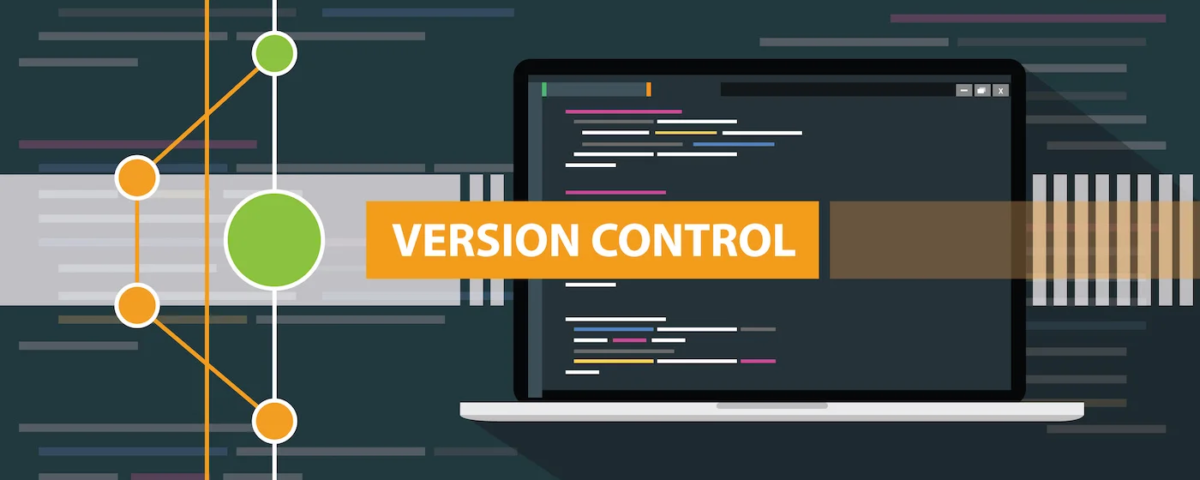
What’s the difference between a dedicated server and a virtual private server?
27th May 2024
Impact of Fun at Work Activities on Employee Engagement
4th June 2024Version control is really important for developers. If you’re a developer, you know how important it is to keep track of code changes and collaborate with your team. That’s where version control software comes in handy. In this article, we’ll review some popular free solutions, and discuss their pros and cons.
If you’re a developer, you know how important it is to keep track of code changes and collaborate with your team. That’s where version control software comes in handy. In this article, we’ll review some popular free solutions, discuss their pros and cons, and provide links to their feature pages.
1. Git
Git is a widely-used distributed version control system designed to handle everything from small to very large projects with speed and efficiency. It’s easy to learn and has a tiny footprint with lightning-fast performance.
Git is a widely-used distributed version control system that enables developers to efficiently manage and track changes in their codebase. Its popularity stems from its robust features, flexibility, and ease of use, making it an indispensable tool for software development teams.
One of the key reasons Git is great for version control is its distributed nature. Unlike centralized systems, Git allows each developer to have a complete copy of the repository on their local machine. This enables them to work independently, without relying on a central server. This distributed model not only improves performance but also allows for better collaboration and redundancy.
Another advantage of Git is its powerful branching and merging capabilities. Branches allow developers to work on different features or bug fixes simultaneously, without affecting the main codebase. Once the work is complete, these branches can be easily merged back into the main branch. This process is streamlined in Git, minimizing conflicts and making it easier to maintain a clean and organized codebase.
Git also excels in its ability to track changes and maintain a detailed history of the project. Each commit in Git represents a snapshot of the codebase at a specific point in time. This allows developers to easily revert to previous versions, compare changes, and identify the source of bugs or issues.
Despite its many advantages, Git does have some downsides. One of the main challenges is its steep learning curve, especially for those new to version control systems. Git’s extensive feature set and command-line interface can be overwhelming for beginners, leading to confusion and frustration.
Another downside is that Git’s distributed nature can sometimes lead to complex workflows and issues with managing remote repositories. For instance, developers need to be diligent in keeping their local repositories in sync with the remote ones, which can be time-consuming and error-prone.
Pros of Git
- widely used and well-supported
- distributed model allows for easy collaboration
- branching and merging are a breeze
Cons of Git
- steeper learning curve for beginners
- limited GUI options
Check out more about Git and GitHub here.
2. Mercurial
Mercurial is a distributed version control system similar to Git, but with a simpler and more intuitive interface. It’s designed to handle large projects and is used by many open-source projects.
It was created in 2005 by Matt Mackall as an alternative to other version control systems like Git and Subversion. Mercurial’s popularity can be attributed to several key factors. It has gained popularity among developers for its simplicity, speed, and ease of use.
Firstly, Mercurial’s distributed nature allows developers to work independently on their local repositories, enabling them to commit changes, create branches, and merge code without relying on a central server. This decentralized approach fosters collaboration, reduces the risk of data loss, and allows for better handling of large projects.
Secondly, Mercurial’s simple and intuitive command set makes it easy for developers to learn and use. Its commands are similar to those of other version control systems, which helps users transition smoothly. Additionally, Mercurial’s clear documentation and active community provide valuable resources for users seeking assistance.
Thirdly, Mercurial is known for its performance and scalability. It can efficiently handle large repositories with thousands of files and revisions, making it suitable for both small and large projects. Its speed is particularly evident in operations like cloning, updating, and merging, which are crucial for effective version control.
However, Mercurial also has some downsides. One notable drawback is its limited support for partial checkouts, which can be inconvenient for developers working on large projects with numerous files. This limitation can lead to increased storage requirements and slower performance.
Another downside is that Mercurial’s popularity is overshadowed by Git, which has a larger user base and more extensive third-party tooling and integrations. This can make it challenging for Mercurial users to find compatible tools and resources and may lead to a steeper learning curve for those transitioning from Git.
Lastly, Mercurial’s extension system, while powerful, can introduce complexity and potential compatibility issues. Some extensions may not be compatible with each other or with specific Mercurial versions, which can lead to confusion and additional maintenance overhead.
Pros of Mercurial
- easy to learn and use
- efficient handling of large projects
- extensible with plugins
Cons of Mercurial
- less popular than Git
- limited third-party integrations
3. Subversion
Apache Subversion, commonly known as SVN, is a widely used version control system that enables developers to track changes to files and directories over time. It has gained popularity due to its simplicity, robustness, and powerful features, making it an excellent choice for managing source code and other digital assets. There’s strong community support behind the software, and it’s widely used in enterprise environments.
One of the key strengths of Subversion is its centralized repository model. This allows for a single source of truth, making it easier to manage and maintain a project’s history. SVN’s atomic commits ensure that changes are either fully committed or not at all, preventing partial or inconsistent updates. This guarantees the integrity of the repository and minimizes the risk of data corruption.
Subversion’s branching and merging capabilities are also noteworthy. Branching allows developers to work on new features or bug fixes without affecting the main codebase. Once the work is complete, the changes can be merged back into the main branch. SVN’s merge tracking simplifies this process by automatically managing merge information, reducing the likelihood of conflicts and making it easier to integrate changes.
Another reason for SVN’s popularity is its wide range of client and server tools, which cater to different platforms and workflows. This flexibility allows developers to choose the tools that best suit their needs, whether they prefer graphical interfaces or command-line utilities.
However, there are some downsides to using Apache Subversion. One limitation is its lack of support for distributed version control. In contrast to systems like Git, SVN requires a constant connection to the central repository for most operations. This can be a hindrance for teams working remotely or with unreliable internet connections.
Additionally, SVN’s performance can be slower compared to other version control systems, particularly when dealing with large repositories. This may lead to longer wait times for operations like cloning or updating the repository.
Pros of Subversion
- centralized model simplifies administration
- mature and stable
- excellent GUI options
Cons of Subversion
- centralized model can limit collaboration
- slower performance with large repositories
4. Fossil
Fossil is a unique version control system that integrates bug tracking, a wiki, and a web interface into one package. It’s easy to set up and use, and its self-contained nature makes it portable. However, Fossil isn’t as widely used as other solutions, which may limit its third-party integrations and support.
Pros of Fossil
- integrated bug tracking, wiki, and web interface
- easy to set up and use
- self-contained, single-file executable
Cons of Fossil
- less widely used
- limited third-party integrations
5. Bazaar
Bazaar is a flexible version control system that supports both centralized and distributed workflows. It’s easy to learn and use, and it comes with some good GUI options. However, the development of Bazaar has slowed down in recent years, and its community and resources are smaller compared to other solutions.
Pros of Bazaar
- easy to learn and use
- flexible, supporting both centralized and distributed workflows
- good GUI options
Cons of Bazaar
- development has slowed down
- smaller community and fewer resources
Conclusion
There you have it — a rundown of the best free version control software for 2024. Each solution has its pros and cons, so it’s essential to consider your specific needs and preferences when choosing the right one for you.





